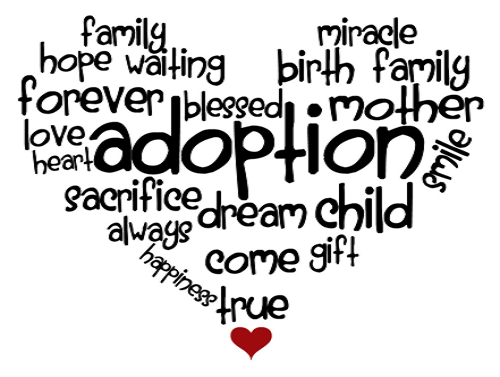November is National Adoption Month, and I hope that you’ve read some of the compelling personal stories that have been published here over these past few weeks. If you want to get a good idea of some of the joys – and challenges – that await adoptive parents, the accounts in National Right to Life News Today are a great place to start.
To get a good idea of the broader picture, to understand why pro-lifers feel adoption is such a loving realistic, life-saving alternative to abortion, let’s flesh out those personal accounts with some basic information and statistics about adoption in the U.S.
 Surveys and studies on adoption aren’t as frequent as research in some fields. However a few government statistics and a comprehensive national survey of adoptive parents in 2007 found out a number of important things.
Surveys and studies on adoption aren’t as frequent as research in some fields. However a few government statistics and a comprehensive national survey of adoptive parents in 2007 found out a number of important things.
According to figures from the 2007 National Survey of Children’s Health (NSCH), the 1.8 million adopted children in the U.S. comprise about 2% of America’s child population. About a quarter of these represent international adoptions, with nearly equal amounts representing private domestic adoptions (38%) or adoptions from foster care (37%).
About a quarter are adopted by relatives, and close to a third (32%) are adopted at birth or at least placed for adoption at one month or less.
Infant adoption has become rarer since 1973. According to the U.S. Department of Health and Human Services Adoption USA Chartbook, prior to 1973, about 8.7% of never married women who gave birth made a plan for adoption. However that dramatically dropped to 1% in the 1990s.
While the HHS Chartbook mentions the role of reproductive technology such as in vitro fertilization giving childless couples the chance to conceive on their own, the abortion deaths of millions of babies who could have been available for adoption also surely played a role.
There is great openness to adoption in the American public. A 2002 survey of women aged 18-44 found 33.1% considering abortion with 23.2% of those actually taking steps to adopt a child. An adoption activist writing in 2008 said that there were more women seeking to adopt unrelated children than there were foster children awaiting adoption (Katz, Washington Post, 11/8/08).
A surprisingly high percentage, 39%, of adoptions involve children with special health needs. Race or ethnicity does not appear to be a significant barrier either, with 40% of parents adopting children of a different race, ethnicity, or culture.
People interested in adoption may be intimidated by potential costs, but this does not have to be prohibitive. Though some adopting parents do indeed face costs of $10,000 or more, at least half pay less than $5,000, with 29% paying nothing at all, according to the Chartbook.
While many of those paying little or nothing to adopt are relatives, this does not necessarily represent all those paying lower fees. Twenty-two percent of those parents adopting children who are not related did not pay anything either.
About 80% of parents adopting children after 1997 filed for federal adoption tax credits that went into place that year, and about 13% of adopted children had a parent who reported receiving some financial assistance from their employer.
With pre-planned infant adoptions, typically adopting parents cover necessary medical and legal fees.
Private agencies, some of them religious, can be helpful in facilitating adoptions, guiding would be parents through the process. They can not only help with legal paperwork but assist in making the match and working out the transition.
The 2007 NSCH survey found that adopting parents were likely to be married, to be educated, to live in safe neighborhoods and to have health insurance. The children in those homes were more likely to be read to, to attend church, and to participate in extracurricular activities. Those parents overwhelmingly describe relationships with their children as “very warm” and say that they would make the same decision again.
There are challenges and conflicts in any relationship, but adoption appears to offer significant benefits for everyone involved.
Adopting parents, obviously, have the joy, challenge, expense, and reward of loving and raising a child, watching him or her succeed, stumble, and eventually grow into responsible adulthood.
Adoption can be good for single mothers facing crisis pregnancy situations as well, offering them a viable alternative if they are unable or unwilling to raise their children themselves. Pregnant mothers who allow their child to be adopted are more likely to finish school, obtain a higher level of education, attain better employment, avoid public assistance, and achieve greater financial stability.
Adoption affirms the unborn child’s right to life, allowing each baby to enter the world as a blessing for another family. Adopted children do well in school and show high levels of self-esteem, optimism, social competency, feelings of security. They are less likely to be depressed, use alcohol, and engage in vandalism, theft, group fighting, and use weapons. [1]
In this month celebrating adoption, let us honor and thank those many women and men who have stepped forward, opened their hearts, and given these kids a chance.
[1] This material from a literature synthesis by Patrick Fagan, of the Marriage & Religion Research Institute, in an 11/29/10 report “Adoption Works Well.”
LifeNews.com Note: Randall O’Bannon, Ph.D., is the director of education and research for the National Right to Life Committee. This column originally appeared at NRL News Today.







